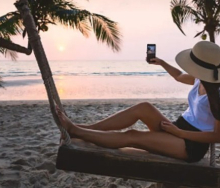The COVID-19 pandemic has presented businesses with an opportunity to revisit some basic and long-held assumptions. Many businesses will emerge more efficient, more resilient, and more profitable than before. Locally, attractions appear to be in a holding pattern, waiting for things to return to normal.
However, a return to pre-COVID visitor attendance levels is predicted to take a few years. The industry dares not lose the opportunity to strategically re-assess and make the changes necessary to survive and ultimately thrive in this increasingly digital future.
Revenue maximisation is key for attractions
Revenue = Quantity x Price. It’s the simplest of equations, but it’s the most important in any business.
Most attractions focus almost exclusively on quantity of tickets sold. They monitor visitor statistics, enter and exit partnerships, add distribution channels, undertake marketing initiatives, introduce new experiences… all in an effort to ‘drive feet’. Quantity (ie. visitor numbers) is tangible and visual, something we can see. It’s measurable. It’s a metric where success and failure are clear.
But what about price? It’s no less important than quantity. After all, a 5% increase in price has the same effect on revenue as a 5% increase in visitor numbers. But how do we know if our price is right or wrong? How do we measure success here? Which of these equally important metrics gets more attention: visitor numbers or average ticket prices?
Ask most attractions how they determine what price to charge, and the answers are vague and unscientific. For the more corporate attraction, the end-user price is often a function of the budgeting process. But budgets can’t adapt in real-time to a fluid and fast-changing world. Prices might also be based on ‘gut feel’, or last year’s price plus an increase, or on what others are charging, or on a few phone calls, or a stab at what the market can bear. If feet are low, one might discount. If feet are satisfactory, one may never look at one’s prices…well, until next year’s budget.
Many attractions adopt a ‘dual pricing’ strategy, charging internationals more than locals, or offering a local discount at specific times. This is deeply unpopular with tourists, who feel taken advantage of, and tourism authorities, who must market the destination. It gives the illusion of democratising access to locals. But in reality, it forces locals into inconvenient times or prices which, though lower, are still out of reach for many.
One day, we will surely laugh at ourselves, for setting prices in this fashion.
Smart pricing is not higher pricing
A static pricing strategy is no longer a smart pricing strategy. Different visitors have different constraints. For some (read out-of-towners with limited time), price is less important than time; they’d pay more for a shorter wait, so they can get more done in their limited time. For others (read locals), price is more important; they’d come when the site is quieter if the price was lower.
Fixed-price tickets were introduced in 1870 by retailers to control increasingly complex stores and fragmented store networks. Before that, customer and retailer negotiated until they found a mutually acceptable price. Market haggling is still part of many cultures today. In the 1980s, technological advances enabled airlines to (re)introduce smart pricing. Airlines offered a range of ever-changing fares, also known as dynamic pricing or demand pricing, based on supply and demand for that seat on that flight at that time. This enabled them to smooth the demand curve, fill seats in low-demand times and maximise revenue on all flights.
Increase revenue, improve customer satisfaction, and increase democratisation.
It’s important to note that smart pricing is not higher pricing, it’s correct pricing. Before smart pricing was introduced, air travel was the preserve of the wealthy. Smart pricing has democratised access to air travel.
Smart pricing is now ubiquitous across the tourism and leisure industry. Hotel owners, bus and taxi operators and ride-share apps were next to adopt. Overseas, attractions large and small have adopted smart pricing: from Disney’s parks to stadium sports operators, from family-owned museums to zoos and aquariums, from golf courses to ski resorts.
For attractions, smoothing the demand curve through smart pricing provides a better experience for both locals and out-of-towners. It creates a better revenue outcome, both in terms of consistency and overall quantum.
Locally, attractions are behind the curve. But the world is a global village, as Marshall McLuhan famously said, and the local industry will catch up. As the world takes its time returning to pre-COVID activity levels, a smart pricing strategy could be the difference between keeping the doors open and shutting down. As we exit the pandemic and activity levels return to normal, smart pricing will enable attractions to smooth demand and maximise both revenue and customer satisfaction.
The most forward-thinking attractions will follow their overseas counterparts, using best-of-breed machine-learning technology to automate pricing and truly maximise revenue. The result will be happier tourists, greater accessibility for the local market, increased customer satisfaction and improved profitability.







